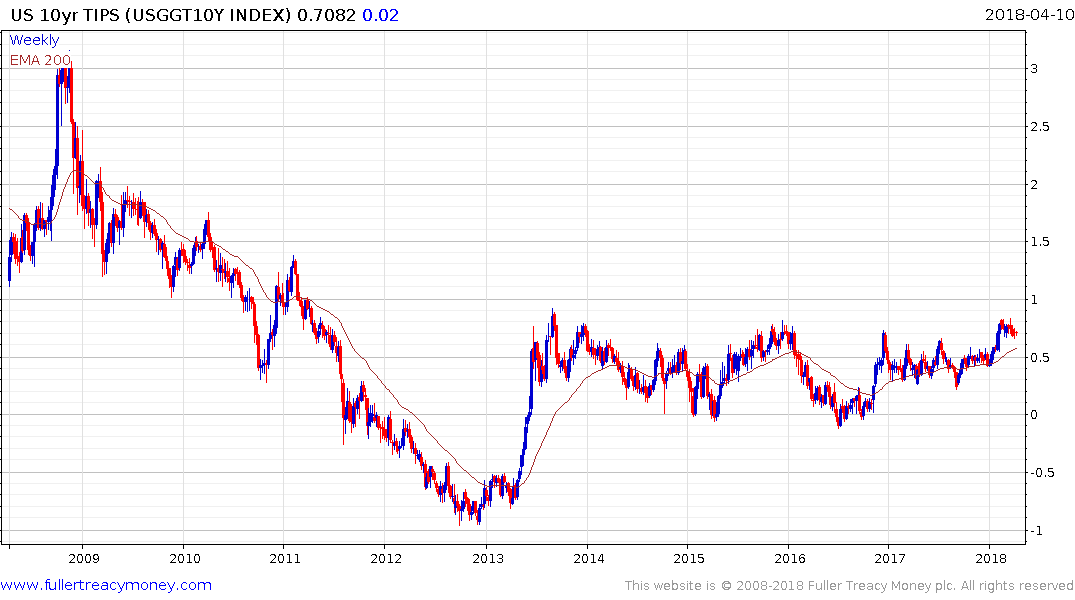Email of the day on inflationary expectations
I'm starting to think more and more that we are likely heading into an environment of inflation and slow growth - Stagflation. I emailed you back on February on this topic. Thought you would enjoy this interesting note attached from Ben Hunt’s “Epsilon Theory”.
Thank you for this edition of Ben Hunt’s letter which is always an entertaining read. Here is a section I found educational:
The inflation narrative hit markets in force after the January jobs report of February 2, where wage inflation came in “hot”. It subsided with the “Goldilocks” jobs report of March 9, where wage inflation was “contained”, and the jobs report of April 6 did little to reignite the inflation narrative. But here’s the thing. The wage inflation numbers for the past two months are wrong, crucially flawed by random differences in work-week hours from last year to this year (for more, read “The Icarus Moment”). On an apples-to-apples basis (average weekly earnings, not average hourly earnings), wage inflation in February was 2.9%, not the reported 2.6%, and wage inflation in March was 3.3%, not the reported 2.7%.
My view: the inflation narrative will surge again, as wage inflation is, in truth, not contained at all.
The dog in the street knows that the cost of living has been rising, asset prices are high and currencies are losing their purchasing power. In fact, that was the whole raison d’etre for quantitative easing. However, the data has stubbornly refused to show up in how central banks measure the phenomena.
I’m reminded of a quip from Terry Pratchett’s Guards! Guards! books “You walk along the Streets at Night shouting, It's Twelve O'clock and All's Well. I said, What if it is not all well, and he said, You bloody find another street.” The Fed is therefore engaged in a Discworld way of measuring inflation. They stay well away from the areas of the economy where inflation is obvious and only monitor a narrow subset of factors that return the desired figure.
The idiosyncrasies of how wage growth is measured detailed above are byzantine in nature and like any highly rigid structure are prone to break in a dynamic fashion when the pressure is applied in the right position.

US 10-year TIPS yields have been ranging in an inert manner, mostly above 0% since 2013. Some consolidation is currently underway but a break above 1% would be an unequivocal signal that inflation is a frontpage news story. Ranges are explosions waiting to happen and inflation could surprise on the upside. If that occurs then stagflation might be one of the better potential outcomes.
This article from the Times, kindly forwarded by another subscriber may also be of interest. Here is a section:
Capitalism and the free market are opposites, not synonyms. Some in the Tory party grasp this. Launching Freer, a new initiative to remind the party of the importance of freedom, two new MPs, Luke Graham and Lee Rowley, not only lambast fossilised socialism and anachronistic unions, but also boardrooms “peppered with oligarchical and monopolist cartels”.
One of the most insightful books of recent years was The Innovation Illusion by Fredrik Erixon and Björn Weigel, which argues that big companies increasingly spend their profits not on innovation but on share buybacks and other “rents”. Far from swashbuckling enterprise, much big business is “increasingly hesitant to invest and innovate”. Like Kodak and Nokia they resist having to reinvent themselves even unto death. Microsoft “was too afraid of destroying the value of Windows” to go where software was heading.
As a result, globalisation, far from being a spur to change, is an increasingly conservative force. “In several sectors, the growing influence of large and global firms has increasingly had the effect of slowing down market dynamism and reducing the spirit of corporate experimentation”.
The real cause of Trump-Brexit disaffection is not too much change, but too little. We need to “radically reduce the restrictive effect of precautionary regulation” and promote a new regulatory culture based on permissionless innovation, Erixon and Weigel say. “Western economies have developed a near obsession with precautions that simply cannot be married to a culture of experimentation”. Amen.
Bureaucratic sclerosis takes many forms and is often less remarked upon than other standards of governance. Regulatory arbitrage will always be with us simply because governments will always seek to interfere in how the free market operates. However, the extent of this interference tends to ebb and flow. The tone of the JPMorgan annual letter to shareholders last week was particularly illustrative in that regard. There was a saccharin element to the opening commentary that highlights just how onerous regulation has become but also how much the bank benefits from that condition.
The rise of what is commonly referred to as populism but in my view is more correctly viewed as a revolt against the status quo suggests a shift is underway for those who have benefitted most from the nature of the global market over the last decades.
Back to top

